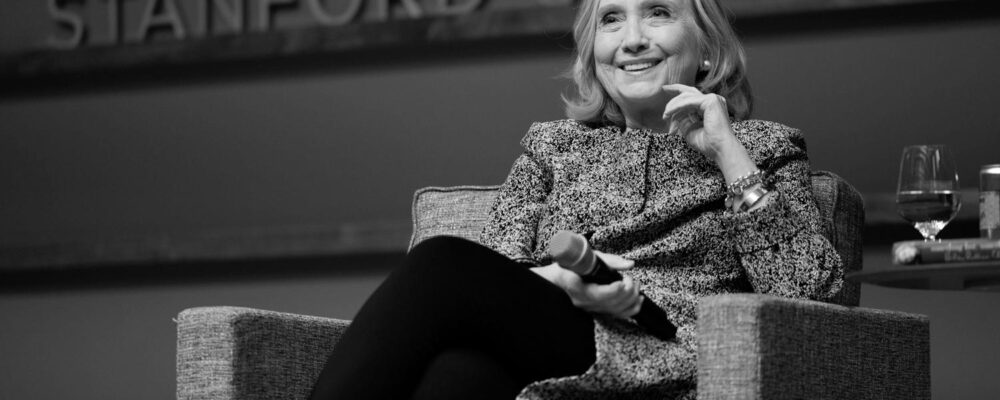Kathy Ho tries to see every new teen on her list within 72 hours of their arrival. For some, it’s too soon, or they’re too sick. But for others, she is a beacon of normalcy. Ho teaches high school inside Lucile Packard Children’s Hospital Stanford (LPCH). “Sometimes I don’t like saying that I’m a teacher,” says Ho, MA ’94. “People get in their minds an idea of what teachers do, and I’m like, ‘That is not what I do. That’s not really what it is here.’ ”
“Here” is room 386, where each year, about 500 LPCH patients also become students. The hospital school is hallowed ground, free of parents, doctors, and medical procedures. “The only time we’re allowed to go in there is to get a beeping IV,” says Wajma Talib, a longtime nurse at LPCH. “It’s a place of learning, and that is it. No medical activity is supposed to happen in there.”
About half of Ho’s students stay for a week or less; others are there for more than a year. LPCH serves some of the nation’s most critically ill patients and performs more open-heart surgeries and kidney transplants than any other children’s hospital in the country. Since 1924, when the hospital school opened—and even in the 27 years that Ho has been at LPCH—patient outcomes have significantly improved. Put simply, the vast majority of even her sickest students will survive. Which means that preparing very ill children to return to school is an increasingly important component of care.
Still, in room 386, academics don’t come first. Physical health and mental health are the priority. “If you’re super scared about something and thinking only about that, there’s no way you’re going to be able to learn,” Ho says. She tosses textbooks aside when a student gets bad news from their doctor, loses a friend in the hospital, or becomes preoccupied by an upcoming procedure. “Sometimes we just talk through that,” she says. “I’m a coach, I’m a counselor, and I’m a mentor. I play all these different roles, and that’s what it means to be a hospital teacher.”
School Rules
Ho began volunteering at the hospital school while earning her master’s in education from the Stanford Teacher Education Program. Now she can’t imagine teaching in a traditional classroom. “They would eat me alive,” she says. “The kids who are here, because of what they’re going through, they have a wisdom that a lot of young people don’t necessarily get.” They are seasoned souls who receive lessons (and even homework) with a deep appreciation for learning and living a typical life. That doesn’t mean they aren’t in the throes of adolescence. Ho keeps corny jokes, banter, and sarcasm in her back pocket. “She’s sassy sometimes,” says David Llano, a former student who was treated at LPCH for acute myeloid leukemia. “And so am I.”
Accredited children’s hospitals are required to offer educational services. LPCH exceeds the standard, employing elementary, middle, and high school teachers and operating as a public school within the Palo Alto Unified School District. Any child being treated at LPCH is eligible to attend the hospital school. Parents can dual enroll them in their home school—whether that’s in Palo Alto or elsewhere—and the hospital school. If a lengthy stay at LPCH results in withdrawal from their home school, they remain students at LPCH for the duration, with official transcripts and anything else they need to stay on track.
‘I’m a coach, I’m a counselor, and I’m a mentor. I play all these different roles, and that’s what it means to be a hospital teacher.’
Ho, who has up to 30 students at any given time, generally coordinates with their regular teachers to get lessons and tests being used at their home schools. Which means that every student has a different curriculum—not to mention the need for, say, science experiments that won’t interfere with treatment. (Hospital gowns, IV tubes, and Bunsen burners don’t mesh well.) On her summer breaks, Ho travels and is active as a National Geographic Explorer. During the 2020 International Education Symposium and Awards, Ho shared the outcome of a grant she’d secured—a video of one of her students trying out a virtual reality hike she’d helped make in the canyons of southern Utah. “I’m there,” the girl says in disbelief, sitting in her wheelchair in room 386, VR goggles pressed against her face. When she takes the goggles off, she’s crying. “That’s the closest thing I’ve been to hiking in forever. I’ve missed it.”
Ho says that creating those experiences and getting granular about everything from physics to poetry gives her the freedom to indulge her many intellectual interests. But it’s still a lot to stay on top of each day. “If you don’t know the answer, you just say, ‘I don’t know, but let’s find out together,’ ” she says.
Some students come to room 386, which is open Monday through Thursday from 9:30 a.m. to 11:30 a.m. and 1 p.m. to 3 p.m., but most work from their rooms, which means Ho logs about 10,000 steps per day walking between them. Even patients in isolation are often cleared to receive visits from their teachers, who gown up and wear masks. Some kids—due to a short stay or fragile health—don’t do any schoolwork while in the hospital. But for others, education emerges as something they can understand and control in the wake of an overwhelming diagnosis.
“A kid’s job is to go to school, right?” says Ho. “Now all of a sudden you can’t go to school, and perhaps your credits are going to get threatened so that you may not be able to graduate. That’s devastating to them.” Earlier this year, a LPCH patient and high school freshman named Ella visited the classroom for the first time. Before her heart transplant 10 days prior, Ella had been enrolled in multiple honors classes. Now, despite emails back and forth, Ella’s teachers still hadn’t sent Ho or Ella any assignments, instead expressing sympathy and lenience. “They don’t care about my schoolwork,” Ella said in a moment of frustration.
“I feel like it’s a disservice [to] the kid if the teacher is too nice, and they just say, ‘Oh, they’re in the hospital. Tell them not to worry about anything,’ ” Ho says. It’s not uncommon for transplant recipients to be out of school for some time before their surgeries and for months after, while their bodies and immune systems recover. In the months since Ella’s transplant, Ho has helped her catch up on schoolwork. Ella pushes herself hard. “She’s working every day for hours with me,” Ho says. “I keep saying to her, ‘They understand that you fell behind.’ ” Ho is there to relieve stress—not to cause it, she says. But she also recognizes the psychological benefit of helping kids keep up with their peers outside the hospital.
“I actually think the medicine is only a small piece for some problems, like chronic pain,” says Julie Good, the director of pain management services at LPCH and a clinical associate professor of anesthesiology, perioperative and pain medicine. “It’s about problem-solving around what it means to have a full life. When you talk to kids, they have dreams, they want to be things.” School, Good says, can keep those dreams alive by giving kids a way to learn and grow.
Learning by Heart
When Ho explains her job, she’s often asked about the emotional challenges of working with critically ill children. But negative thoughts don’t weigh heavily on her mind. “I think of our school as being a really positive, supportive, happy place. It’s not sad and depressing.” There are many serious things happening at LPCH. “But it’s a children’s hospital, you know what I mean?” she says. “You should try to make people smile.”
Still, Ho isn’t impervious to the setting she’s chosen. When a child gets bad news, they grieve together. Her students have seen her cry. But most of the time school is one of the few chances for these kids to express a part of their identity that’s not tied to being sick. Good says that when Ho visits a student who can’t leave their room, “it’s magic.” She’s watched a child’s vital signs improve when a teacher or aide starts reading to them, and she sees the joy in those who attend graduation—an elaborate production organized by Ho—or apply to college while in the hospital. One patient, she says, “did his SATs while on a ventilator in the ICU.”
Llano was treated at LPCH during his senior year of high school. “Normalcy is important,” he says. “I think that’s what a sick person grieves the most.” While he was still a patient, Llano had the chance to return to his home school, but he went back to LPCH’s after one day. “There was a lot of pity associated with having a cancer diagnosis,” he says. His old classmates weren’t sure how to interact with him, so they asked him about his illness and commented on his changed appearance. He chose to stay in room 386 until graduation, with kids he could relate to. “That’s one of the things everyone likes about hospital school,” he says. “Everyone has faced their own battles. You’re just going to treat them like a regular human being. I don’t think I would have graduated without hospital school.”
Kali Shiloh is a staff writer at Stanford. Email her at kshiloh@stanford.edu.
“Stanford University, officially Leland Stanford Junior University, is a private research university in Stanford, California. The campus occupies 8,180 acres, among the largest in the United States, and enrols over 17,000 students.”
Please visit the firm link to site





